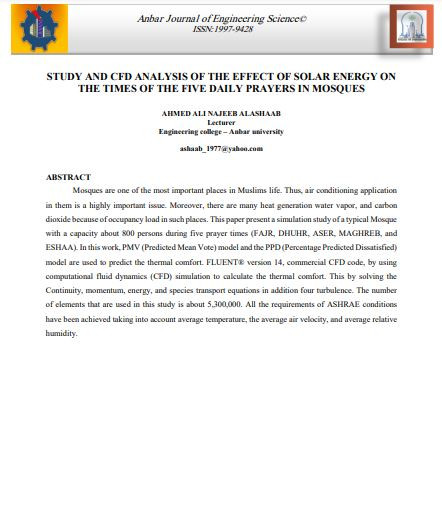
Mosques are one of the most important places in Muslims life. Thus, air conditioning application
in them is a highly important issue. Moreover, there are many heat generation water vapor, and carbon
dioxide because of occupancy load in such places. This paper present a simulation study of a typical Mosque
with a capacity about 800 persons during five prayer times (FAJR, DHUHR, ASER, MAGHREB, and
ESHAA). In this work, PMV (Predicted Mean Vote) model and the PPD (Percentage Predicted Dissatisfied)
model are used to predict the thermal comfort. FLUENT® version 14, commercial CFD code, by using
computational fluid dynamics (CFD) simulation to calculate the thermal comfort. This by solving the
Continuity, momentum, energy, and species transport equations in addition four turbulence. The number
of elements that are used in this study is about 5,300,000. All the requirements of ASHRAE conditions
have been achieved taking into account average temperature, the average air velocity, and average relative
humidity.
I agree to the terms outlined below:
You agree to upload and assign Mosqpedia Database the rights to use the content worldwide and in perpetuity across all current and future media platforms. Mosqpedia Database may edit, copy, adapt and translate your contribution.
The content will be distributed under the Creative Commons Attribution-Deed – Attribution-NonCommercial-NoDerivatives 4.0 International – Creative Commons
All data will be stored in line with data protection regulations.